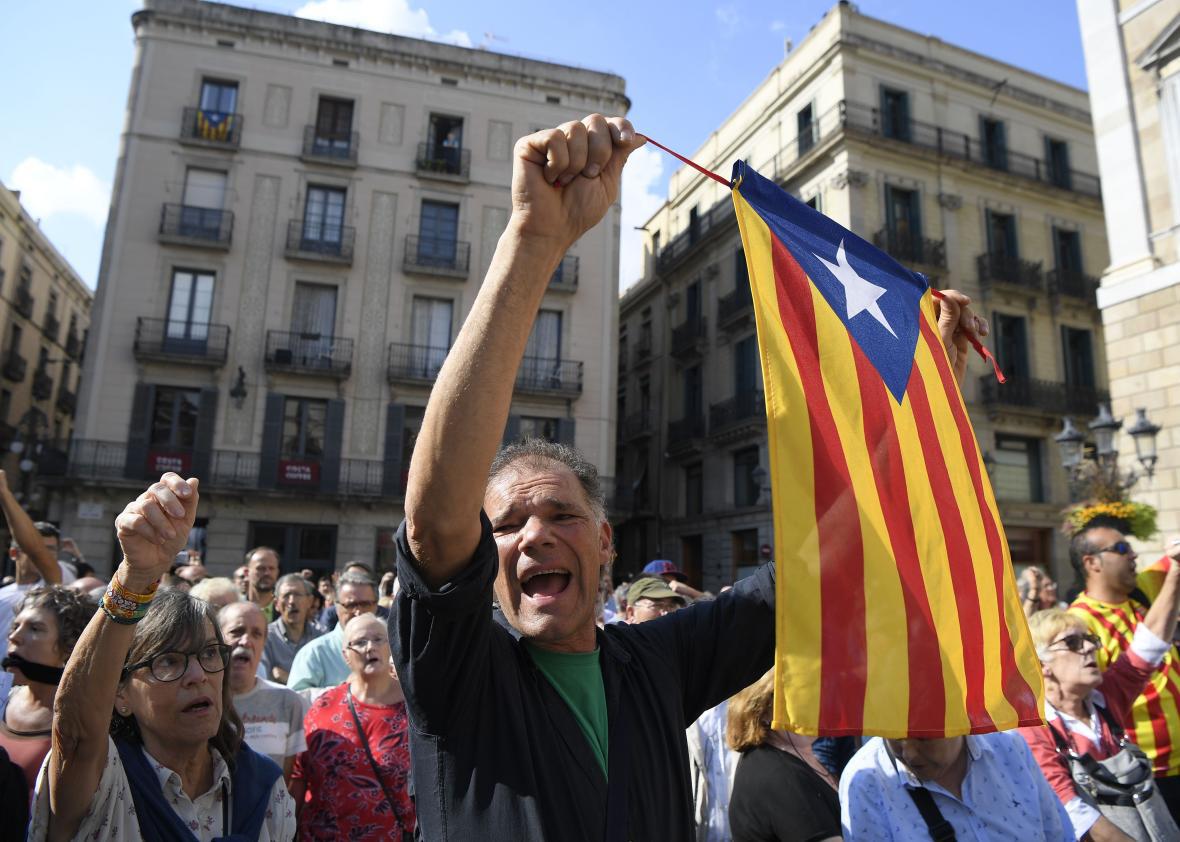Catalonia’s push for full independence from Spain may end up costing it much of its current level of autonomy, with Madrid now moving to impose direct rule over the region.
Here’s how we got here: After a chaotic and disputed independence vote on Oct. 1, which the Spanish government attempted to prevent by force, Catalonia had been expected to declare independence. Instead, Catalan leader Carles Puigdemont made an ambiguous announcement on Oct. 10, saying he would use the referendum result to press for independence but would suspend its implementation for a few weeks to allow for negotiations with the Spanish government.
But Spanish Prime Minister Mariano Rajoy rejected the idea of negotiating and demanded that Puigdemont clarify whether or not he had, in fact, declared independence. Puigdemont was given a deadline—Thursday—to make his intentions clear, and if he is in fact still seeking independence, to abandon that goal. Otherwise, Rajoy plans to invoke a never-used article of the Spanish Constitution allowing it to dissolve the region’s autonomy if it “acts in a way that is seriously prejudicial to the general interest of Spain.”
It appears that Puigdemont is not backing down: He sent a letter on Thursday morning threatening to declare full independence unless Madrid agrees to dialogue. He also accused Spain of engaging in “repression,” referring to the arrest of two prominent Catalan independence leaders on charges of sedition earlier this week.
Rajoy’s Cabinet is due to meet for an emergency session on Saturday to decide what to do now. Options could include taking control of Catalonia’s regional police and finances or calling a snap election. These moves would also have to be approved by the Spanish senate, but that body is controlled by Rajoy’s party and its allies.
At the moment, it looks like Puigdemont has bitten off a little more than he can chew. He can’t exactly abandon the independence push after all that’s happened this month but also wants to avoid direct rule and possibly his own arrest. The crisis is also hitting Catalonia’s economy, the strongest in Spain, with several major companies announcing plans for move their headquarters out of the region due to political uncertainty. And there are signs of strain within Catalonia’s pro-independence leaders. Puigdemont belongs to a center-right nationalist party, but his government relies on the support of the radical leftist CUP, which has accused him of “inadmissible treason” over his reluctance to immediately declare independence following the vote.
Rajoy is headed to Brussels on Thursday for a summit of EU leaders. While some of them have vaguely called on the bloc to address the crisis, and there’s some public support for Catalonia among recently independent members like Slovenia, the EU has mostly stayed out of the conflict, calling it an internal matter for Spain. The Catalan crisis will not be on the agenda at the summit, though Rajoy may still be pressed to address it.
Right now, the Spanish government is in a much stronger position in the standoff, which unfortunately means that Catalan leaders will likely see escalation as their only option. If Madrid moves to impose direct rule, it will almost certainly provoke more massive protests, and Puigdemont’s best hope is, perversely, that Spanish authorities will once again employ the heavy-handed tactics they used on the day of the referendum, and that more scenes of police beating protesters on the streets of Barcelona will elicit international pressure on Rajoy to negotiate.
It’s a long-shot strategy that’s likely to lead to more violence and deepen Spain’s worst political crisis in decades, but with no compromise in sight, it’s hard to imagine any other outcome.
